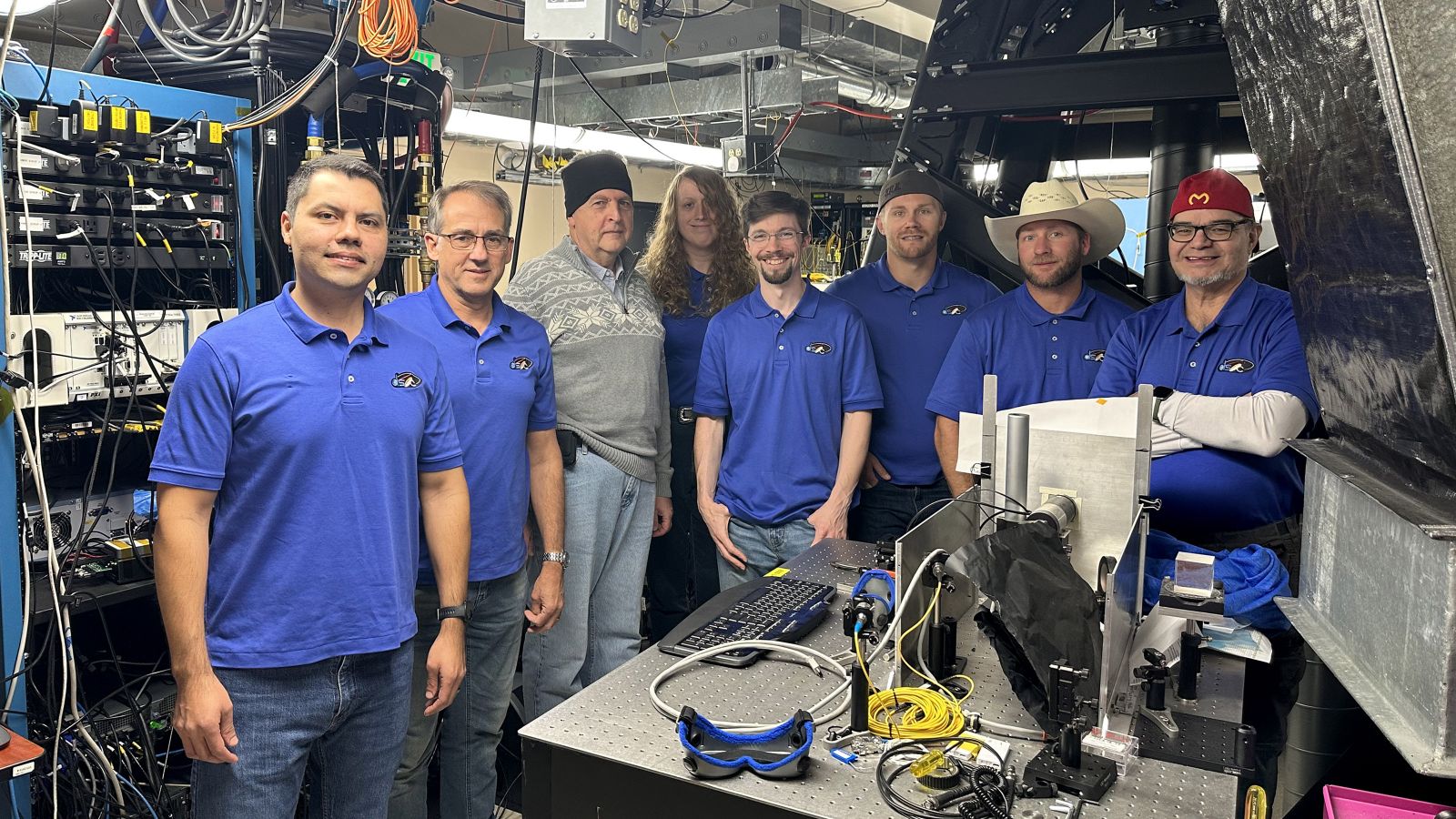The one about the cat video sent from space
How Te Herenga Waka alum Malcolm Wright ended up working on cat videos at NASA.

It was a 15-second video featuring a ginger tabby named Taters who was chasing a laser pointer. But this wasn’t any old cat video. This one was transmitted from a spacecraft and travelled a record-setting 31 million kilometres, at 267 megabits per second, and took just 101 seconds to reach Earth—faster than most home internet connections.
It may sound like some sort of cosmic joke, but there was a scientific reason behind the cat video caper. The video’s transmission, a world first, demonstrated NASA’s use of laser technology that can quickly transmit large amounts of data back to Earth from deep space.
Te Herenga Waka alum Dr Malcolm Wright was part of the the team that developed the tech. Malcolm works at NASA’s Jet Propulsion Laboratory (JPL) in Southern California and is the technical lead responsible for delivering the flight and ground lasers used in the Deep Space Optical Communications (DSOC) technology demonstration project.
DSOC is piggy-backing on NASA’s Psyche spacecraft, which was launched in October last year on a six-year mission to study a metal asteroid between the orbits of Mars and Jupiter. The flight optical terminal hardware—including a camera, laser, telescope, and an isolation platform—has been mounted on the Psyche spacecraft, allowing the DSOC team to send high-bandwidth data from space millions of kilometres back to Earth.
Until now, NASA has been using radio waves to communicate with spacecraft on missions beyond the moon, but Malcolm says there are enormous benefits to using lasers instead.
“Radio or microwaves require huge radio dishes to send the information from the spacecraft back to Earth and vice versa. And because it’s radio waves, you’re limited by how much data you can send back—it’s only capable of rates of hundreds of kilobits up to a few megabits per second,” he says.
“For any mission to deep space, you really want to maximise the amount of data you can send back so you can see this cool science straight away, which is why optical communications, using lasers, are much better because you can get a lot more information on it and receive all the data much more quickly. It’s a bit like the difference between dial-up and fibre internet at home. It also takes much less power because the narrow laser beams concentrate the power. ”
He says an enormous amount of work has gone into building different components of the project over the years.
“Our group did ground-to-ground experiments communicating across mountaintop optical links. Then we had to work out how to point the laser beam really accurately to an object that’s millions of miles away and moving at 17,000 miles an hour.
“We tested our technology using links to the International Space Station to try tracking in a low earth orbit and we also did it with a spacecraft in a lunar orbit. We then had to work out how to capture the downlink back here on Earth through larger telescopes.”
Malcolm says the DSOC project is the culmination of all those steps, going from low earth orbit to lunar and now into deep space. The aim of DSOC’s current Psyche mission is to ultimately demonstrate a data link to a distance of up to 400 million kilometres, or 2.7 times the average distance between the Earth and the Sun, which is the furthest distance of Mars from the Earth.
“It’s so much further away, so you need more power on the lasers and you need to point and track the spacecraft and ground station extremely accurately. This project is really pushing the limits, but it’s so far proving to be a success.”
The long-term objective of DSOC is to test key technologies that might one day be used on future crewed planetary missions to quickly send complex scientific information back to Earth.
“Ultimately, the next big step is having human exploration of Mars. If you’re going to send astronauts all the way there, you don’t want them sending their amazing images and videos via a slow dial up modem and be limited by how much data they can get back. The DSOC technology will allow humanity to have a sort of virtual presence through the solar system,” says Malcolm.
Malcolm, who’s originally from Upper Hutt, says his time at Victoria gave him an excellent grounding in physics. He graduated from the University in 1986 with an MSc in Physics. He was then accepted into a top American university to do his PhD and postdoctoral studies in laser physics and joined JPL in Pasadena, California, about 25 years ago. His expertise meant he was perfectly placed to lead the team designing and building the ground and flight lasers to the specifications required for the DSOC mission.
“The best part of working at JPL and NASA is that you’re on a team—everyone plays an important role and they’re experts in their specific part of the project. Then the whole team comes together and the mission succeeds,” he says.
“I’ve always loved the application side of physics and it’s been amazing to work on this project and to actually get something you’ve helped build to fly in deep space. I always wanted to go to space, so while I might not be up there myself, I have been able to put hardware there that is still working, which is pretty cool.”
